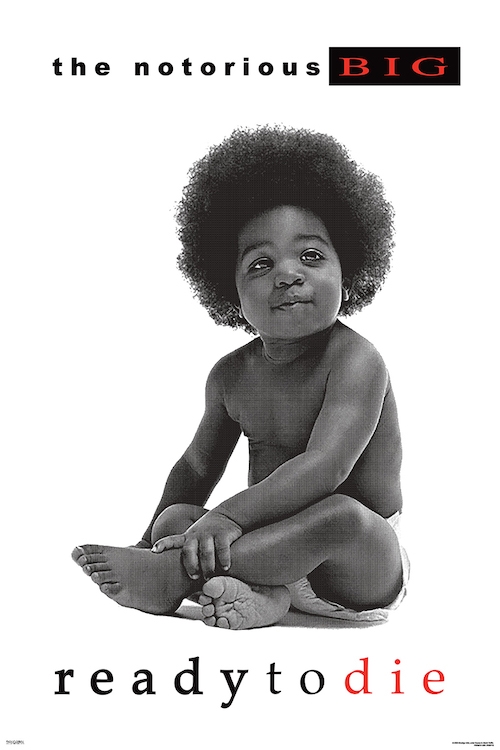

Drug dealing, murder, robbery, and criminal acts were the main themes of the project but what Big did was add layers to these actions - his thoughts, emotions, regret, and reasoning behind each deed.
#Notorious big ready to die censoring movie#
Ready To Die is described as semi auto-biographical but by the way that Big rapped, every bar felt like a scene out of a movie and Biggie was our trusted narrator. It’s those same corners where he freestyled and sold drugs that served as the inspiration behind the album. The term “unsigned hype” wasn’t used for influencers with 1M followers and only one song to show - it was used for wordsmiths like Biggie whose name spread by word of mouth thanks to a penchant for rapping on NYC street corners. Cassette tapes were just beginning to phase-out in favor of compact discs, while streaming services, let alone websites like Napster were barely imaginable. Times were different 25 years ago when Big unleashed Ready To Die. The Notorious B.I.G’s life was cut short at the age of 24 with only one album under his belt, Ready To Die - an album that can confidently be placed among greatest albums of all time. Not many people are able to achieve this within their career-span, since it takes. Classic albums are just that: timeless bodies of work that still resonate years on, even decades after its release. Yet, we all know, a classic album is only determined through the test of time. Your favorite rapper probably called his or her's upcoming album a “classic” before it even hit shelves. Obviously, Diddy won over Big, who, says Cease, “perfected” the formula-street-hustler rhymes softened by glossy, radio-ready production-sketching a blueprint that JAY-Z, 50 Cent and rap stars of today still follow.From Lil Wayne’s "Tha Carter III" cover to Travis Scott's “SICKO MODE,” "Ready To Die" followed hip-hop on its journey to becoming a global phenomenon. “When he played ‘Juicy’ for Big, it was just like, ‘What the fuck is this?’” Lil’ Cease, Big’s childhood friend and frequent collaborator, tells Apple Music. “Diddy stepped in and said, ‘Hey, man, we gotta make some radio records.’ Diddy had to convince Big.” “In the early process was Biggie at his most purest, rawest form,” Brooklyn DJ Mister Cee, associate executive producer and the man often credited with discovering Big, tells Apple Music. The song, which samples Mtume’s 1983 R&B classic “Juicy Fruit”, is one of the first examples of Diddy turning extremely recognisable past hits into commercial hip-hop gold the shiny, familiar production helped Big’s gruff voice and tales of a “common thief” find radio and mainstream success in a year when the biggest rap hit on Billboard’s Hot 100 was Salt-N-Pepa and En Vogue’s “Whatta Man”. On the seminal breakthrough single “Juicy”, he professes his love of hip-hop through a deeply personal come-up narrative so exemplary that few, if any, have come close to matching it since. The violence and costs of the hustle are laid bare on the stick-up-kid anthem “Gimme the Loot” and the closer “Suicidal Thoughts”, which ends with the sound of him killing himself while on the phone with executive producer/mentor Sean “Diddy” Combs (then known as Puff Daddy), who pleads for him to reconsider.īut against the backdrop of violence and death, Big mixes in moments of aspiration and confidence. “‘You’re saying you’re ready to die? What’s up, Big?’ He told me, ‘I’m going through a lot.I’m tired of being up there hustling, my mom is sick, I have a baby on the way.’ He was going through a lot of pressure.”įrom the autobiographical “Things Done Changed” onwards, Biggie Smalls spoke directly, without distillation, about Brooklyn crime and culture, connecting instantly with those in the know while compelling others less attuned to catch up. “I remember when he was doing the title track, I was a little disturbed,” Easy Mo Bee, who produced several of the album’s standouts, tells Apple Music.

elevated the form to a divine art of brutal honesty. While hardly the first to rap about the pleasures and pitfalls of drug dealing, The Notorious B.I.G.

By naming his debut Ready to Die, the Brooklyn rapper bluntly encapsulated both his fearless, take-no-prisoners lyrical style and his perpetual sixth sense that death could come for him at any time. By the age of 22, Christopher Wallace had already lived quite the life.


 0 kommentar(er)
0 kommentar(er)
